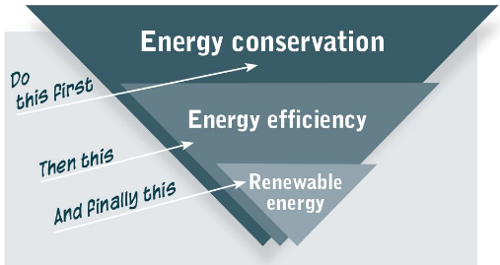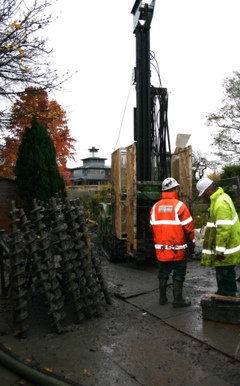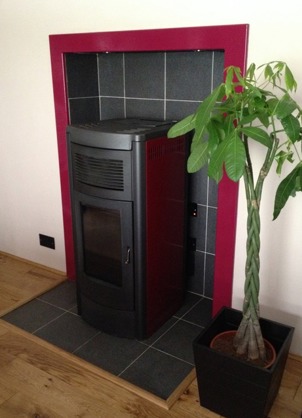Climate emergency toolkit and case studies
Engage with your community
Ways to engage with your community
There are a number of ways in which you might choose to engage with the local community, for example holding a public meeting, carrying out a survey or petition, and initiating a discussion at a parish council meeting. The following links offer useful advice:
- Net Zero Now from Cambridge Carbon Footprint - you can view recordings and resources from their recent scheme to help train and support community climate leaders across the district.
- Peterborough Environment City Trust - work to protect and enhance the environment, making a difference now and for the future. They give people the information and support needed to become more involved in their local area.
- Do-it website - to advertise volunteering opportunities within your organisation we suggest that you use the do-it website. Once there you will need to sign up your organisation and upload your opportunities.
- Reach - connects charities and non-profit organisations with volunteers with specific skills to offer.
- Trustee Bank - NCVO members can advertise Trustee roles for free.
- Cambridge Council for Voluntary Service (CCVS) - a registered charity set up to champion and support community and voluntary groups. It promotes volunteering within our District and recognises that funding is one of the most important but most difficult areas for organisations to deal with. In order to help local groups, CCVS has a range of services linked to funding. They can help with Grant applications too. Lots of other free support is available such as how to set up and running voluntary and community groups, GDPR advice, safeguarding information, publicity and lots more. If you are thinking about setting up a green group and are unsure where to start, contact them on 01223 464 696 or by email.
- South Cambs Sustainable Communities Slack group is an online chat room to ask questions, have discussions and share information sharing with others. If you would like to join, please email zcc@scambs.gov.uk
Tree Planting
Tree planting can offset some of the carbon dioxide, which is contributing to climate change, and improve air quality. The Tree Warden Scheme is a national initiative to help in conserving and enhancing their local trees and woods. Volunteers are appointed by parish councils or other community organisations.
Guidance on Trees for Parish and Town Councils has been produced by The National Association of Local Council (NALC) and the Woodland Trust. It provides information on the Tree Charter which can be used, in conjunction with strategies such as neighbourhood planning and the Tree Warden Scheme, to support local council practice regarding trees. More information can be found on The National Association of Local Council website
Case Study: Cambourne Town Council
Cambourne Town Council received £2,538 and planted 1,200 young trees and shrubs around the Great Cambourne cricket outfield in February 2020. Residents and pupils from Cambourne Village College helped the Town Council by volunteering their time to help with planting.
Energy saving in community buildings
It is good practice to follow the ‘energy hierarchy’, prioritising actions as below.

This means looking at measures which save energy before you look at renewable energy.
For example, improving insulation is an energy conservation measure, upgrading lighting to LEDs is an energy efficiency measure and solar PV panels or replacing oil or gas heating with an air or ground source heat pump are renewable energy measures.
Open eco homes is a long-running project from Cambridge Carbon Footprint. Householders who have renovated or built new eco homes pass on their knowledge to visitors by organising tours in their homes over two days in September. The advice is local, independent and free, (although donations are always very welcome). As well as tours, the project includes workshops to help build retrofitting skills and knowledge. Case studies, including details of local suppliers, are available on the website. Although mainly featuring homes, Open Eco Homes provides lots of useful information relevant to Community buildings
Action with Communities in Rural England have produced a useful video ‘A Zero Carbon Future for Village Halls’.
Centre For Alternative Technology offers free, independent and impartial advice on a wide array of topics relating to sustainability with information on renewable energy and green buildings.
If you are unable to generate all the energy you need using renewables, you may wish to consider switching to a green tariff. This sends a message to your supplier and the wider industry that you wish to avoid electricity generated from fossil fuels.
Thermal imaging cameras:
To make your building energy efficient, it helps to understand where the heat is escaping. If you are resident in South Cambridgeshire you can borrow a thermal imaging camera for free to identify gaps in insulation, draughts and heating problems which are usually invisible.
Community Energy
Support local energy schemes
- A government guide has been created for local groups who are interested in setting up a community energy group.
- Community Energy England is a membership organisation representing and supporting those committed to the community energy sector.
- The Centre for Sustainable Energy is an independent national charity working on solutions to the threat of climate change. They provide support, advice and information for those interested in community energy.
- Rural Community Energy Fund provides funding and support for feasibility studies to help scope potential projects.
- Cambridgeshire County Council's guide to Community heating
Minimise waste going to landfill or incineration
In your own operations, ensure all your waste is recycled or composted.
Have you considered setting up a repair café?
Transport
Can travel in a conventional car be replaced by bicycle, public transport, or electric vehicle? Or can it be reduced, for example, by use of virtual meetings? Or use car share schemes? Could you provide bikes or electric bikes for staff as they carry out any work-related trips. Where a car or van is needed consider using electric only?
There are currently 2 main schemes that help employees finance new bikes. They are an employee benefit that saves employees money on a bike and accessories. You pay nothing upfront and the payments are taken tax efficiently from your salary by your employer. The scheme are: Bikes 2 Work and Cycle Scheme
Organisation’s fleet
Decarbonising your fleet is a good way of reducing emissions - and it is completely within your control making it slightly easier to implement than other behavioural changes
If you switch to electric vehicles, government currently has a range of grants available, including a specific "Workplace ChargePoint Scheme" to subsidise the costs to purchase and install EV ChargePoints for staff and fleet use.
You might also consider other types of transportation - for those shorter journeys do you need a car at all? Consider whether a pool-bike scheme or using cargo-bikes for first or last mile deliveries work for you?
Energy Saving Trust has some useful resources around sustainable transport for businesses and organisations, and can provide a free fleet review.
Case study: Great Abington Parish Council
Free e-bike trials for residents of Great or Little Abington and Hildersham.
Case Studies
Ground Source Heat Pumps
A Ground Source Heat Pump transfers heat from the ground into buildings
The Energy Saving Trust have lots of information regarding ground source heat pumps:

Case study: Gamlingay Eco Hub.

Air Source Heat Pumps

- For more technical information see the website of the Heat Pump Association
- To find approved installers, see the website of the Microgeneration Certification Scheme (MCS).
The Energy Saving Trust have lots of information regarding air source heat pumps.
Case study: Coton Village Hall
The building is the main community hall in Coton, used in excess of 300 times per year. Initially they planned to demolish it and start again, but various problems, including cost, came up, and since the timber frame and foundations were sound, they opted to keep these and strip out and replace the walls and roof. Read more about their journey on the Open Eco homes website.
Small Scale Biomass Heating
The carbon dioxide emitted when wood is burned is the same amount that was absorbed over the months and years that the plant was growing. The process is sustainable as long as new plants continue to grow in place of those used for fuel. There are some carbon emissions caused by the cultivation, manufacture and transportation of the fuel, but as long as the fuel is sourced locally, these are much lower than the emissions from fossil fuels.
The Energy Saving Trust have lots of information regarding Biomass Heating.
Case study: Smithies Lane Depot in Barnsley
In 2004, Barnsley Metropolitan Council made a commitment to consider biomass heating systems for all new and refurbished buildings.

Solar Thermal Heating
The Energy Saving Trust have lots of information regarding Solar Thermal Heating.
Case study: Gamlingay Eco Hub
The Eco Hub has no gas or oil supply so generates all its heating from renewable energy.
Infrared heating
Infrared heating directly heats the thermal mass of the building and its occupants, rather than the air. This form of heating is particularly useful for community buildings which require varied heating requirements throughout the day.
Case study: Elsea Park Community Centre
Elsea Park is a Community Centre based in Bourne, Lincolnshire, used by various clubs and organisations. The modern building is also available for hire by individuals, groups and businesses. The directors were considering improving their energy efficiency and approached BEE for support. Following a site visit from a BEE advisor, it was identified that the draughty reception area was being heated by inefficient electric fan-heaters, and recommendations were made to replace this with infrared heating. Visit the Business Energy Efficiency website for further information about this project.

Solar photo voltaic (PV)
Solar PV panels are made from photovoltaic cells, grouped together in modules which capture the sun's energy and convert it into electricity.
The Energy Saving Trust have developed a Solar Energy Calculator to gain an idea as to what financial benefits you may see from installing a solar PV system.
Solar Together Cambridgeshire
We are working with Cambridgeshire County Council to deliver Solar Together Cambridgeshire, a group-buying scheme to help you purchase high-quality and competitively priced solar panels and battery storage systems for solar panels. The scheme launched on 1 September 2020. Visit our Solar Together webpage to find out more.
Battery Storage for Solar PV:
Battery storage is often used alongside solar PV. It allows surplus electricity generated by solar panels to be stored for later use e.g. in the evenings rather than exported to the National Grid.
Case Study: eCoton Solar Savers:
Coton residents [PDF, 0.3MB] set up a bulk purchase scheme in order to increase local uptake of solar pv panels.
Case Study: Reach Community Solar Farm
The solar farm is owned and run by a co-operative of local people, and generates enough clean, green electricity to power 50 houses - about half the village. A community solar farm which installed 1000 solar panels on approximately 5 acres of farmland. Read more about the Reach Community Solar Farm journey.
Hydroelectric schemes
Hydroelectric power (also called hydropower or hydro systems) use the power of moving water (kinetic energy) to generate electricity. The British Hydropower Association provides more information on hydroelectric schemes:
Case study: Congleton Hydro
A small-scale hydro-electric scheme being developed at Havannah Weir on the River Dane in Cheshire by Dane Valley Community Energy (DVCE).
Case study: Osney Lock Hydro
The first community owned hydro scheme to be built on the Thames.

